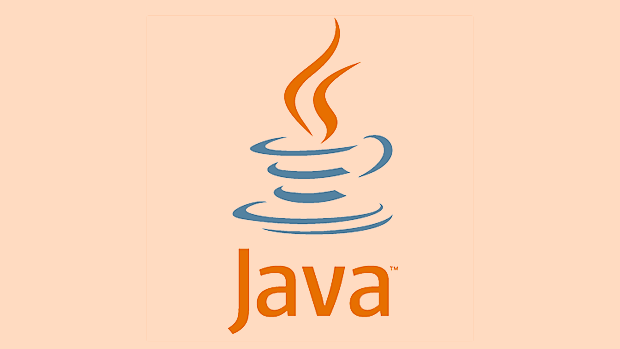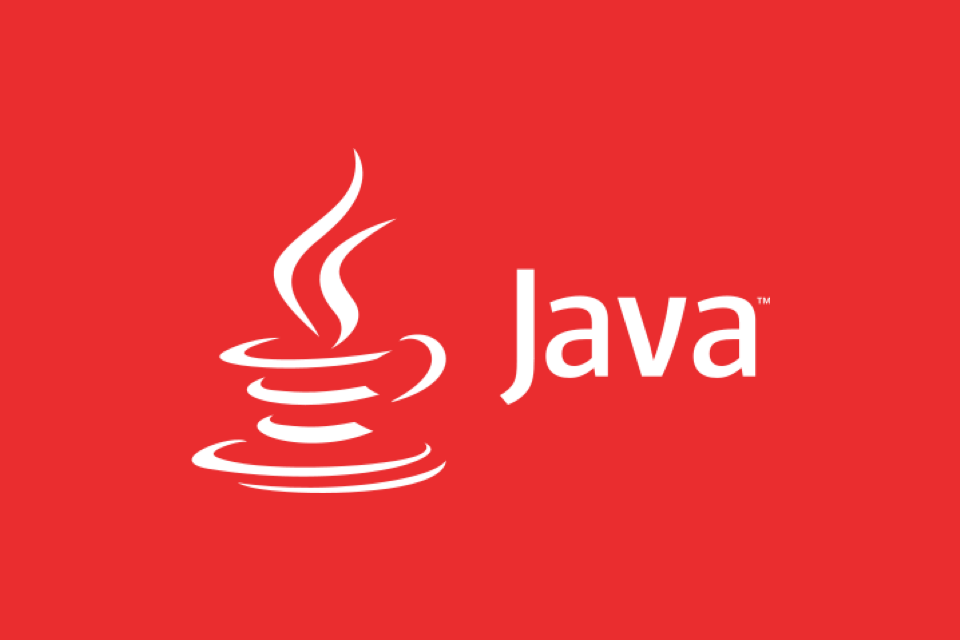Java vs Python for Backend Development: A Detailed Comparison
Aug 04, 2025 am 11:57 AMSystems with high performance requirements, such as Java for financial transactions, and Python for lightweight services; 2. Python has high development efficiency, suitable for MVP, and Java is suitable for large-scale team collaboration; 3. Java is mature in the Java enterprise-level ecosystem, and the Python framework is light, especially FastAPI is outstanding; 4. Java is the first choice for high-concurrency distributed systems, and Python requires asynchronous models to improve performance; 5. Python has a smooth learning curve, and a wide range of talents, and Java has sufficient reserves of enterprise-level talents; 6. Python is suitable for cloud-native lightweight deployment, and Java is more stable in traditional operation and maintenance; the final choice should be combined with the team's technology stack, project cycle, performance requirements, integration complexity and operation and maintenance costs, and the key is to use the right scenario.

Java and Python are both very popular programming languages in back-end development, with their own huge ecosystem and community support. Which one to choose often depends on project requirements, team background, performance requirements, and long-term maintenance strategies. The following is a detailed comparison of Java and Python from multiple dimensions to help you make more appropriate choices in back-end development.

1. Performance and execution efficiency
Java:
- Based on JVM (Java virtual machine), it is compiled into bytecode and runs, and its performance is close to native code.
- It is slow to start, but has stable runtime performance, suitable for high concurrency and high throughput scenarios.
- With mature memory management, JVM provides powerful garbage collection mechanisms and tuning tools.
Python:

- Interpreted languages have relatively low execution efficiency and are particularly poor in CPU-intensive tasks.
- GIL (Global Interpreter Lock) limits multi-threading parallelism capabilities and has low multi-core utilization.
- Suitable for I/O-intensive tasks (such as Web API, file processing), but not for large-scale computing.
?Conclusion : Java has more advantages for systems with high performance requirements (such as financial transactions, large e-commerce platforms); lightweight services or prototype development are sufficient for Python.
2. Development efficiency and grammatical simplicity
Python:

- The syntax is concise and intuitive, the code is readable, and the development speed is fast.
- Supports rapid prototyping, suitable for agile development and startup projects.
- Rich built-in libraries and "glue language" features to facilitate integration of other systems.
Java:
- The syntax is relatively lengthy and requires writing more boilerplate code (such as getter/setter, type declaration).
- Strongly typed systems are conducive to maintenance and reconstruction in large projects.
- Modern Java (Java 8) has introduced features such as Lambda and Stream to enhance the development experience.
?Conclusion : Python is developed faster, suitable for rapid iteration of MVP or small teams; Java is more conducive to code specification and long-term maintenance in large team collaboration.
3. Ecosystem and framework support
Java's mainstream backend framework:
- Spring / Spring Boot : Enterprise-level development fact standard, powerful functions, supports microservices, security, data access, etc.
- Micronaut / Quarkus : An emerging cloud native framework, fast startup and low memory footprint, suitable for Serverless.
- Maven/Gradle build tools are mature and dependency management is clear.
Python's mainstream backend framework:
- Django : Full-functional framework, with its own ORM, Admin, and certification system, suitable for rapid construction of complete applications.
- Flask : Lightweight and flexible, suitable for small services or API microservices.
- FastAPI : Modern asynchronous framework, excellent performance, automatic generation of OpenAPI documents, which has been very popular in recent years.
?Conclusion : Java is more mature in the enterprise-level ecosystem; Python's framework is lighter, especially FastAPI performs well in modern API development.
4. Concurrency and scalability
Java:
- Natively supports multi-threading, the threading model is mature, and is suitable for high-concurrency scenarios.
- Reactor, CompletableFuture, etc. support responsive programming.
- It is widely used in distributed systems (such as Kafka, ZooKeeper, Hadoop).
Python:
- Due to GIL, multi-threading cannot be truly parallel and is usually solved by multiprocessing or asynchronous (asyncio).
- Asynchronous frameworks (such as FastAPI asyncio) can effectively improve I/O concurrency capabilities.
- Suitable for handling large numbers of network requests, but not for CPU parallel computing.
?Conclusion : Java is the first choice for high concurrency and distributed systems; Python requires reasonable use of asynchronous models to achieve performance.
5. Learning curve and talent ecology
Python:
- It is easy to get started and is the first language for many beginners.
- It is widely used in data science, AI, automation and other fields, with a large developer base.
Java:
- The learning curve is slightly steep, and you need to understand concepts such as OOP, JVM, and generics.
- As the main language for enterprise development for a long time, the recruitment market is mature and there are many senior talents.
?Conclusion : There are many new teams or cross-domain (such as AI backend), Python is more friendly; it is easier to find Java experts in enterprise-level projects.
6. Deployment and Operation and Maintenance
Java:
- Packaged as JAR/WAR, deployed in Tomcat, Jetty or run directly.
- JVM tuning is complex, but monitoring tools are rich (such as JVisualVM, Prometheus Micrometer).
- After containerization, the startup is slow and the memory footprint is high, but new frameworks such as Quarkus are improving.
Python:
- Simple deployment and can be run through WSGI/ASGI servers (such as Gunicorn, Uvicorn).
- Dependency management should be paid attention to (virtualenv, pip, poetry), and it is recommended to lock the version in the production environment.
- Fast startup and low resource occupancy, suitable for Kubernetes and Serverless environments.
?Conclusion : Python is more suitable for cloud-native and lightweight deployment; Java is more stable in traditional enterprise operation and maintenance systems.
Summary: How to choose?
| Scene | Recommended language |
|---|---|
| Large enterprise systems, high concurrency, microservice architecture | ? Java (Spring Boot) |
| Rapid prototyping, startup projects, MVP development | ? Python (FastAPI/Flask) |
| Data analysis, AI integration backend | ? Python |
| High performance, low latency systems (such as trading systems) | ? Java |
| The team is familiar with Python, but the project scale is not large | ? Python |
| Need for long-term maintenance, multi-person collaboration, strict regulations | ? Java |
The final choice should not only look at the language itself, but should be combined with:
- Team Technology Stack
- Project life cycle
- Performance requirements
- Third-party integration requirements
- Operation and maintenance costs
Basically that's it. Both Java and Python are very powerful, the key is to use the right place.
The above is the detailed content of Java vs Python for Backend Development: A Detailed Comparison. For more information, please follow other related articles on the PHP Chinese website!

Hot AI Tools

Undress AI Tool
Undress images for free

Undresser.AI Undress
AI-powered app for creating realistic nude photos

AI Clothes Remover
Online AI tool for removing clothes from photos.

Clothoff.io
AI clothes remover

Video Face Swap
Swap faces in any video effortlessly with our completely free AI face swap tool!

Hot Article

Hot Tools

Notepad++7.3.1
Easy-to-use and free code editor

SublimeText3 Chinese version
Chinese version, very easy to use

Zend Studio 13.0.1
Powerful PHP integrated development environment

Dreamweaver CS6
Visual web development tools

SublimeText3 Mac version
God-level code editing software (SublimeText3)
 VSCode settings.json location
Aug 01, 2025 am 06:12 AM
VSCode settings.json location
Aug 01, 2025 am 06:12 AM
The settings.json file is located in the user-level or workspace-level path and is used to customize VSCode settings. 1. User-level path: Windows is C:\Users\\AppData\Roaming\Code\User\settings.json, macOS is /Users//Library/ApplicationSupport/Code/User/settings.json, Linux is /home//.config/Code/User/settings.json; 2. Workspace-level path: .vscode/settings in the project root directory
 How to handle transactions in Java with JDBC?
Aug 02, 2025 pm 12:29 PM
How to handle transactions in Java with JDBC?
Aug 02, 2025 pm 12:29 PM
To correctly handle JDBC transactions, you must first turn off the automatic commit mode, then perform multiple operations, and finally commit or rollback according to the results; 1. Call conn.setAutoCommit(false) to start the transaction; 2. Execute multiple SQL operations, such as INSERT and UPDATE; 3. Call conn.commit() if all operations are successful, and call conn.rollback() if an exception occurs to ensure data consistency; at the same time, try-with-resources should be used to manage resources, properly handle exceptions and close connections to avoid connection leakage; in addition, it is recommended to use connection pools and set save points to achieve partial rollback, and keep transactions as short as possible to improve performance.
 Mastering Dependency Injection in Java with Spring and Guice
Aug 01, 2025 am 05:53 AM
Mastering Dependency Injection in Java with Spring and Guice
Aug 01, 2025 am 05:53 AM
DependencyInjection(DI)isadesignpatternwhereobjectsreceivedependenciesexternally,promotingloosecouplingandeasiertestingthroughconstructor,setter,orfieldinjection.2.SpringFrameworkusesannotationslike@Component,@Service,and@AutowiredwithJava-basedconfi
 python shutil rmtree example
Aug 01, 2025 am 05:47 AM
python shutil rmtree example
Aug 01, 2025 am 05:47 AM
shutil.rmtree() is a function in Python that recursively deletes the entire directory tree. It can delete specified folders and all contents. 1. Basic usage: Use shutil.rmtree(path) to delete the directory, and you need to handle FileNotFoundError, PermissionError and other exceptions. 2. Practical application: You can clear folders containing subdirectories and files in one click, such as temporary data or cached directories. 3. Notes: The deletion operation is not restored; FileNotFoundError is thrown when the path does not exist; it may fail due to permissions or file occupation. 4. Optional parameters: Errors can be ignored by ignore_errors=True
 How to work with Calendar in Java?
Aug 02, 2025 am 02:38 AM
How to work with Calendar in Java?
Aug 02, 2025 am 02:38 AM
Use classes in the java.time package to replace the old Date and Calendar classes; 2. Get the current date and time through LocalDate, LocalDateTime and LocalTime; 3. Create a specific date and time using the of() method; 4. Use the plus/minus method to immutably increase and decrease the time; 5. Use ZonedDateTime and ZoneId to process the time zone; 6. Format and parse date strings through DateTimeFormatter; 7. Use Instant to be compatible with the old date types when necessary; date processing in modern Java should give priority to using java.timeAPI, which provides clear, immutable and linear
 How to share data between multiple processes in Python?
Aug 02, 2025 pm 01:15 PM
How to share data between multiple processes in Python?
Aug 02, 2025 pm 01:15 PM
Use multiprocessing.Queue to safely pass data between multiple processes, suitable for scenarios of multiple producers and consumers; 2. Use multiprocessing.Pipe to achieve bidirectional high-speed communication between two processes, but only for two-point connections; 3. Use Value and Array to store simple data types in shared memory, and need to be used with Lock to avoid competition conditions; 4. Use Manager to share complex data structures such as lists and dictionaries, which are highly flexible but have low performance, and are suitable for scenarios with complex shared states; appropriate methods should be selected based on data size, performance requirements and complexity. Queue and Manager are most suitable for beginners.
 Understanding the Java Virtual Machine (JVM) Internals
Aug 01, 2025 am 06:31 AM
Understanding the Java Virtual Machine (JVM) Internals
Aug 01, 2025 am 06:31 AM
TheJVMenablesJava’s"writeonce,runanywhere"capabilitybyexecutingbytecodethroughfourmaincomponents:1.TheClassLoaderSubsystemloads,links,andinitializes.classfilesusingbootstrap,extension,andapplicationclassloaders,ensuringsecureandlazyclassloa
 Google Chrome cannot open local files
Aug 01, 2025 am 05:24 AM
Google Chrome cannot open local files
Aug 01, 2025 am 05:24 AM
ChromecanopenlocalfileslikeHTMLandPDFsbyusing"Openfile"ordraggingthemintothebrowser;ensuretheaddressstartswithfile:///;2.SecurityrestrictionsblockAJAX,localStorage,andcross-folderaccessonfile://;usealocalserverlikepython-mhttp.server8000tor






